Premium Only Content
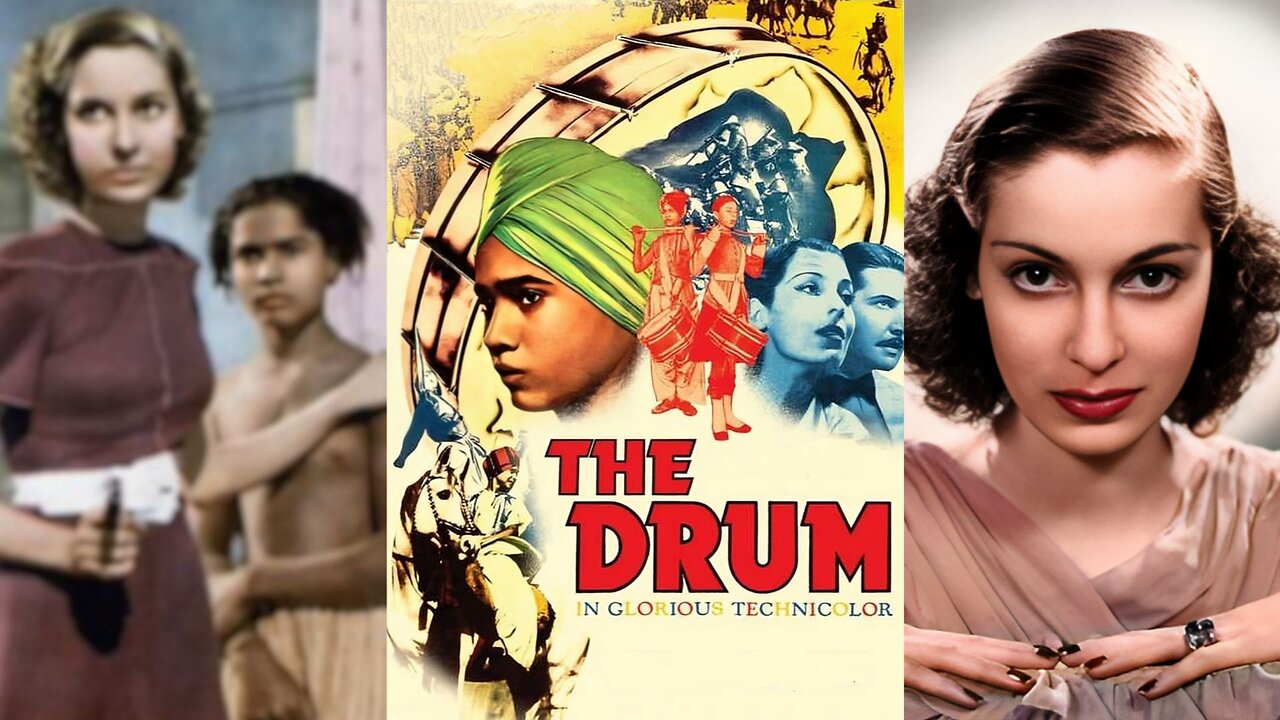
THE DRUM aka Drums (1938) Sabu, Raymond Massey & Valerie Hobson | Adventure, War | TECHNICOLOR
The Drum (released in the U.S. as Drums) is a 1938 British Technicolor film based on the 1937 novel The Drum by A. E. W. Mason. The film was directed by Zoltan Korda and produced by Alexander Korda. It stars Sabu, Raymond Massey, Valerie Hobson, Roger Livesey and David Tree.
SYNOPSIS
During the British Raj, Captain Carruthers works under cover to track smuggled shipments of arms on the restless Northwest Frontier of India. He fears a full-scale rebellion is brewing. To forestall this, the British governor signs a treaty with the friendly, peace-loving ruler of Tokot, a key kingdom in the region, which is described as four days' march northward from Peshawar. Meanwhile, the king's son, Prince Azim, befriends Carruthers and a British drummer boy, Bill Holder, who teaches him how to play the instrument.
During the British Raj, Captain Carruthers (Roger Livesey) works under cover to track smuggled shipments of arms on the restless Northwest Frontier of India, the modern day Afghanistan-Pakistan border (the Durand Line). He fears a full-scale rebellion is brewing. To forestall this, the British governor (Francis L. Sullivan) signs a treaty with the friendly, peace-loving ruler of Tokot, a key kingdom in the region, which is described as four days' march northward from Peshawar. In real life the British held a fort at Abazai near this location, not far from the famous Takht Bhai ruins. Meanwhile, the king's son, Prince Azim (Sabu), befriends Carruthers and a British drummer boy, Bill Holder (Desmond Tester), who teaches him how to play the instrument.
However, the king's brother, Prince Ghul (Raymond Massey), has the king assassinated and usurps the throne; Azim escapes a similar fate thanks to two loyal retainers. They hide out in Peshawar, where the British are based. When one of Ghul's men finds and tries to kill the prince, Azim is rescued by Carruthers' wife (Valerie Hobson). Although he is offered sanctuary, Azim declines, believing it to be safer to remain hidden among his own people.
Carruthers is then sent to negotiate with Ghul, who pretends to want to honour the treaty. In reality, Ghul is the mastermind behind the rebellion. He plots to kill Carruthers and his detachment of men on the last day of a festival to signal the start of the revolt. Prince Azim learns of the ambush. When he is unable to convince the governor, he chooses to risk his own life to warn his friends.
CAST & CREW
Sabu as Prince Azim
Raymond Massey as Prince Ghul
Roger Livesey as Capt. Carruthers
Valerie Hobson as Mrs. Carruthers
David Tree as Lieut. Escott
Desmond Tester as Bill Holder
Francis L. Sullivan as Governor
Archibald Batty as Major Bond
Frederick Culley as Dr. Murphy
Amid Taftazani as Mohammed Khan
Lawrence Baskcomb as Zarullah
Roy Emerton as Wafadar
Michael Martin Harvey as Mullah
Martin Walker as Herrick
Ronald Adam as Major Gregoff
Charles Oliver as Rajab
Julian Mitchell as Sergeant
Miriam Pieris as Indian dancer
Directed by Zoltan Korda
Written by Lajos Biro (adaptation), Arthur Wimperis, Patrick Kirwan, Hugh Gray (scenario), Story by A.E.W. Mason
Produced by An Alexander Korda production
Cinematography Georges Perinal, Osmond Borradaile, (Indian location scenes)
Edited by Henry Cornelius
Music by John Greenwood
Color process Technicolor
Production company
London Films Distributed by United Artists
Release date 1 April 1938
Running time 104 minutes
Country United Kingdom
Language English
NOTES
Korda’s company London Films made three films in the 1930s about the British Empire: Sanders of the River (1936), The Drum and The Four Feathers (1939).
The Scottish regiment featured in this film is a battalion of the Gordon Highlanders, as evident from the cap badge, kilt and headdress. This is true to life, as the Gordon Highlanders were very active on the North-West Frontier during the British Raj, and were, for a time, garrisoned at Fort Jamrud at the mouth of the Khyber Pass. Portions of the film shot in India were filmed in Chitral and the North-West Frontier, and there are scenes very reminiscent of the Khyber Pass. However, some mountain scenes were also filmed in North Wales (Rhinog Fawr Mountain and Harlech).
One sequence shows an Indian Army gun crew unlimbering a mountain battery, a small field piece that was disassembled and transported on the backs of pack animals. Such guns were used frequently on the North-West Frontier, and a mountain battery from the Indian Army also was deployed with the ANZACs at the Gallipoli campaign (1915-1916). Similarly, a muleback radio set is used in the opening skirmish scene. During an early scene with his courtiers, Prince Ghul says that he was an observer at Gallipoli, and that emulation of British training and tactics, not religious enthusiasm, will be the key to his own army's success.
The film was well received in Britain but caused protests when shown in Bombay and Madras, where it was considered by many to be British propaganda.
-
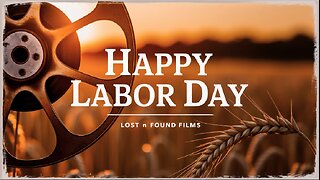 0:55
0:55
Lost n Found Films
4 days agoHAPPY LABOR DAY!
76 -
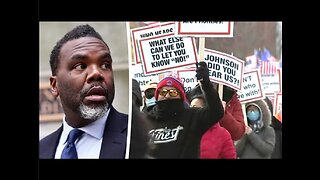 17:54
17:54
Nate The Lawyer
3 hours agoChicago Mayor’s $600M Migrant Spending Leaves City $1.1B Budget CRISIS.
1.45K18 -
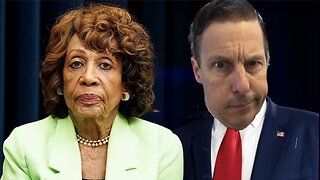 LIVE
LIVE
Jeff Ahern
1 hour agoThe Saturday show with Jeff Ahern
329 watching -
 LIVE
LIVE
ZWOGs
1 hour ago🔴LIVE IN 1440p! - Sgt Wilky's WARZONEPALOOZA - Warzone Resurgence Tournament - Come Hang Out!
47 watching -
 LIVE
LIVE
Flexible Games
4 hours agoMasked Stranger in Grounded 2!
33 watching -
 LIVE
LIVE
DynastyXL
8 hours ago🔴LIVE: Fortnite The Comeback Stream Starts Here🎃
54 watching -
 3:22:32
3:22:32
BrightGaming
2 hours agoDragon Warrior 1 (NES): Defeat the DragonLord & Save the Kingdom as Erdrick's Heir with BrightGaming
9.41K2 -
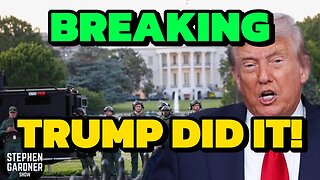 19:15
19:15
Stephen Gardner
19 hours ago🟢YES! Trump did it! + Elon Musk DROPS BOMBSHELL on Democrat Party!
121K231 -
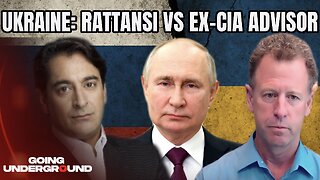 29:24
29:24
Afshin Rattansi's Going Underground
1 day agoEx-CIA Advisor & Afshin Rattansi Have HEATED Exchange Over Ukraine Proxy War
10.3K41 -
 1:06:17
1:06:17
Mike Rowe
21 hours agoThe Mastermind Behind THIS Radical Idea At WSU Tech | Sheree Utash #448 | The Way I Heard It
100K17